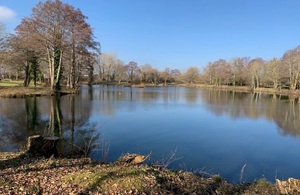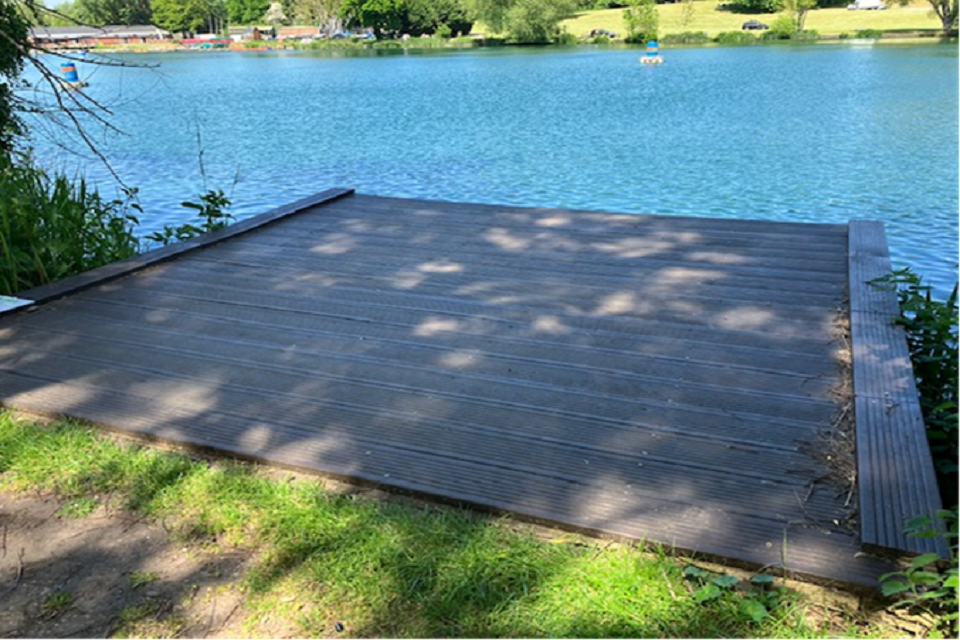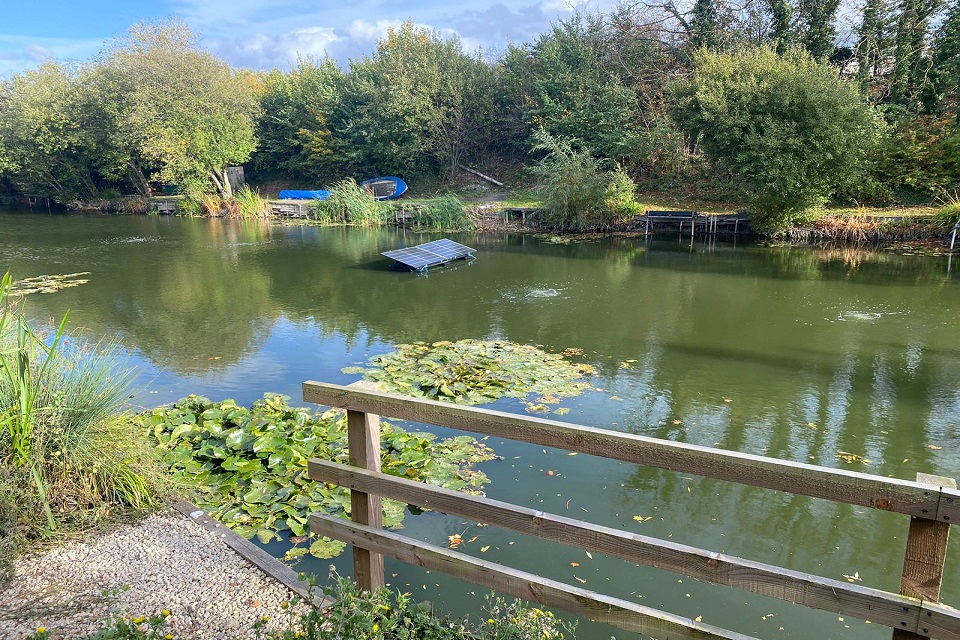£220,000 of rod licence income benefits South East Anglers
Dozens of angling clubs and fishery projects boosted by cash grants.

Nutsey Lake in Hampshire, which once boasted 50lb carp, will have improvements worth £32,000 as part of Environment Agency funding
The Environment Agency’s Fisheries Improvement Programme (FIP) has delivered £925,000 worth of benefits to anglers and has made improvements to vital habitats and fish stocks to England’s fisheries this year.
In the South East, funding has helped many projects, such as the creation of new fish passes, protecting fish stocks, providing new angling platforms, and improving accessibility so more people than ever are able to enjoy the sport.
A number of significant projects across the region have already been completed in the last year, with more projects due to finish over the next few months thanks to the funding.
Paul Newman, an Environment Agency local fisheries officer in Hampshire, said:
The Fisheries Improvement Programme is a great way for the Environment Agency to support angling clubs. The projects will improve fish stocks and help to maintain the popularity of angling.
Anglers often ask us about how we spend the money raised from the sale of fishing licences. The FIP is a prime example of the wide range of activities this income pays for to protect and improve fish stocks and fisheries and boost the popularity of angling.
We will continue to work with angling clubs and fisheries to find out more about the work and projects they would like to see. The more people who go fishing, the more we can invest into things that matter most.
The Environment Agency continues to work with organisations such as the Angling Trust and Wild Trout Trust who all work collaboratively to make sure projects are carried out to their full potential and have the support they need.
Examples of Projects in 2022/23:
Nutsey Lake, Test Valley, Hampshire
Through FIP, £32,000 has been awarded to invest in a series of improvements to Nutsey Lake, which is managed by Test Valley Angling Club. The lake was once one of the best carp fisheries in the country, and held carp in excess of 50lbs. Over the last 30 years, the fishery has progressively shallowed due to the build-up of increasing amounts of decomposing leaf litter.
Test Valley Angling Club has also witnessed increasing numbers of water quality related issues at the lake, such as algal blooms, reduced dissolved oxygen levels and subsequent fish deaths.
With the funding, activities such as the removal of approximately 1000m3 of sediment has been made to improve the water quality within the lake along with the implementation of a tree and terrestrial scrub management programme so that wind and wave action is improved across the water. The lake has also seen a solar aeration system installed so that during periods of prolonged dry weather, dissolved oxygen levels are increased.
Along with ongoing technical advice from Environment Agency staff, the final phase of this project will be the restoration of all swims, or angling platforms, which will be carried out this summer.
Mimram Panshanger Park, Hertfordshire
FIP funding has helped habitat improvements to the chalk stream. The works carried out are from recommendations from the Wild Trout Trust Project Proposal report.
Environment Agency teams partnered with the Wild Trout Trust, Panshanger Anglers, Tarmac and the Herts and Middlesex Wildlife Trust to improve chalk stream habitat on the River Mimram, a globally rare chalkstream.
Trees were felled to reduce the significant shading at the site and to encourage water plants, critical for both fish and the invertebrates they rely on. These trees were used in the channel to create in-water features and ridges, improving flow diversity to enhance fish habitat for a variety of life stages and the potential for successful fish spawning.
Stanborough Lakes and River Lea, Hertfordshire
The Environment Agency has been working with local angling clubs to enhance the performance of existing angling platforms.
Stanborough Lakes is a club run by Welwyn Garden City Angling Club. A total 25 angling platforms were improved after Fisheries Improvement Fund provided just short of £8,500 of rod licence revenue to the project. Welwyn Garden City Angling Club and landowners contributed about £4,000 in volunteer hours to complete the project to an excellent standard that has allowed fishing to continue safely.

Stanborough Lakes at Welwyn Garden City is one of many locations to benefit from the Environment Agency's Fisheries Improvement Programme
For more details of fishing at Stanborough Lakes, see http://www.wgc-angling-club.co.uk/
Wantage and Grove Angling Club, Oxfordshire
Wantage and Grove Angling Club (W&GAC) is a popular, but small club with a mixed fishery. The club has required some improvements and resilience to the increasing chance of warmer, dryer summers. Adopting a phased approach to the improvements the immediate concern was to address the failing bank which was making fishing unsafe for anglers. These bank repairs also included some angling locations suitable for disabled access.

The Environment Agency will improve oxygen levels in this lake at Wantage.
Improvements also included the installation of some permanent aeration into the lake. The power for the aeration is supplemented by solar panels to help reduce the need to the club to be around 24/7 in times of prolonged hot and dry weather. Further repairs to the banks and angling platforms on the far side of the fishery will be completed in the final stage of this project.
Peter Constable, a W&GAC committee member, said:
Wantage and Grove Angling Club greatly appreciate the contribution from the Fishery Improvement Programme, it has enabled the club to strengthen the bank to stop subsidence and improve access for all anglers. As part of the design, the work was planned and carried out in such a way as to ensure that there was disabled access provided to several of the swims worked on.
In addition, the aeration kit, with its automatic timer and battery storage, ensures that the water is aerated early in the morning, when oxygen levels fall to their lowest.
Every penny the Environment Agency receives in fishing licence income is reinvested to protect both the sport of angling and England’s waterways. The FIP funding is also matched by local partners including angling clubs and fisheries and local rivers trusts. The total match funding, made up of additional cash and in-kind contributions, is estimated to be early £6.3 million.
Every year, the Environment Agency works to make a real difference for fisheries and anglers through an array of activities including habitat restoration, fish stocking, improvement of access to habitat through fish and eel pass schemes, fish health and regulation, and enforcement.
You can learn more about how the licence fee income is used in the EA’s Annual Fisheries Report
Did you know you can get your licence sent instantly as an email or a text message or you can continue to get your licence card in the post? Going digital is better for the environment, and savings made on paper and postage can be spent on improving fisheries.
Find out more about how to purchase a fishing licence here: Buy a rod fishing licence - GOV.UK